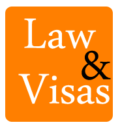Many misconceptions surround the H-1B visa program in the U.S., particularly around its influence on job availability and wage levels for American workers. A common belief is that H-1B workers reduce job opportunities for U.S. citizens or that companies use H-1B visas solely to save on labor costs by hiring less expensive foreign workers. However, let’s delve into the realities of H-1B visas and explore how this program impacts the U.S. economy, particularly in the tech sector.
Understanding the H-1B Visa
The H-1B visa allows foreign professionals to work in the United States for an initial period of up to three years, with the possibility of an extension of up to six years. To qualify, applicants must hold a bachelor’s degree (or equivalent) in a relevant field. Each year, 85,000 H-1B visas are made available, and demand consistently exceeds supply. U.S. Citizenship and Immigration Services (USCIS) runs a lottery for these visas starting on April 1st, and in high-demand years, the cap is often filled within days.
The H-1B visa is predominantly used in fields such as finance, engineering, architecture, medicine, education, and, most notably, technology. According to the Economic Policy Institute’s analysis of the Department of Labor’s data from fiscal year 2022, the top companies utilizing H-1B workers include:
- Amazon
- Infosys
- Tata Consultancy Services
- Cognizant
These companies often need specialized skills to keep up with growth in areas such as software development and systems engineering.
The H-1B Program as an Economic Catalyst
The rapid growth of the tech industry in the U.S. has created a high demand for skilled professionals that domestic labor alone cannot meet. H-1B visas allow companies to fill these critical roles and maintain their competitive edge globally.
While some critics argue that hiring foreign workers takes jobs away from U.S. citizens, data suggests otherwise. According to research by Vivek Wadhwa, immigrants played a crucial role in the tech boom, founding over 50% of startup companies in the Bay Area between 1995 and 2005. These immigrant-founded companies went on to create a significant number of jobs for U.S. workers, illustrating that immigrants often generate opportunities rather than take them away.
Moreover, research shows that skilled foreign professionals bring diversity and unique skills that drive innovation and economic growth, ultimately benefiting both U.S. companies and the workforce.
Addressing Wage and Displacement Concerns: The Labor Condition Application (LCA)
Another misconception is that companies hire H-1B workers simply to reduce labor costs. However, the H-1B visa has several built-in safeguards, including the Labor Condition Application (LCA) that companies must file with the Department of Labor (DOL) before hiring an H-1B worker.
The LCA serves two main purposes:
- Ensuring Fair Wages: Employers must offer H-1B workers wages that meet or exceed the prevailing wage for the specific role in their geographic area, helping prevent wage suppression.
- Protecting U.S. Workers: Employers must attest that hiring a foreign worker won’t displace similarly employed U.S. workers. This clause is intended to ensure that hiring an H-1B worker does not harm U.S. employment in that field.
In this way, the LCA functions as a double safeguard against both underpaying foreign employees and displacing U.S. workers.
Myths vs. Realities: A Balanced View of H-1B’s Impact
The H-1B program has been subject to myths about wage suppression and job displacement, but these perspectives overlook the broader impact that skilled immigrants have on the U.S. economy. By filling critical talent gaps, they enable American companies to stay competitive, leading to job creation and economic growth that benefits both foreign and domestic workers.
For employers, the H-1B program is more than a means of accessing skilled labor; it’s a critical part of meeting the demands of a rapidly evolving tech sector. For U.S. workers, the program’s safeguards, like the LCA, help maintain fair wages and prevent job displacement.
Global Competition
How the U.S. Compares to Other Countries in Attracting Tech Talent
In recent years, the U.S. has faced increasing competition from countries like Canada and Australia in attracting tech talent. According to a report by the Boston Consulting Group, Canada has emerged as the top destination for global talent, surpassing the United States for the first time in 2020. This shift is attributed to various factors, including Canada’s streamlined immigration policies and its reputation for quality of life.
- Canada: The Canadian government has implemented initiatives such as the Global Talent Stream, which allows employers to expedite the hiring of foreign tech workers. Additionally, Canada’s diverse communities and robust tech ecosystems in cities like Toronto and Vancouver make it an attractive option for skilled professionals.
- Australia: Australia has also enhanced its appeal through its General Skilled Migration program, which awards points for various factors such as age, work experience, and education. This program aims to attract skilled workers to fill labor shortages in critical sectors, including technology.
Trends in Global Mobility of Tech Professionals
The global mobility of tech professionals has been influenced by several trends:
- Remote Work: The rise of remote work has allowed tech professionals to seek employment opportunities without geographical limitations. Many are choosing to relocate to countries with favorable immigration policies while maintaining their jobs with companies based in other nations.
- Increased Demand for Tech Skills: As industries undergo digital transformation, the demand for skilled tech workers continues to grow globally. This has led many countries to adapt their immigration policies to attract talent in fields such as software development, data science, and cybersecurity.
- Competitive Immigration Policies: Countries are increasingly competing for talent by offering incentives such as expedited visa processing, pathways to permanent residency, and family reunification options.
Tips for H-1B Job Seekers
How to Find H-1B-Friendly Companies in Tech
- Research Company Sponsorship Histories: Websites like MyVisaJobs and H1Bdata.info provide databases of companies that have previously sponsored H-1B visas. This can help job seekers identify potential employers who are open to hiring foreign workers.
- Network within Industry Groups: Join professional organizations or online forums related to your field. Networking can lead to job opportunities with companies known for sponsoring H-1B visas.
- Attend Job Fairs: Participate in job fairs focused on international talent or STEM careers, where many employers actively seek candidates willing to sponsor H-1B visas.
Networking and Resume Tips for International Applicants
- Tailor Your Resume: Highlight your skills and experiences relevant to the job you’re applying for. Use keywords that align with the job description to pass through Applicant Tracking Systems (ATS).
- Build a Professional Network: Connect with industry professionals on platforms like LinkedIn. Engage with content relevant to your field and participate in discussions to increase visibility.
- Seek Informational Interviews: Reach out to professionals working in companies of interest for informational interviews. This can provide insights into company culture and hiring practices while expanding your network.
Impact on U.S. Economy and Innovation
The Role of H-1B Workers in Driving Technological Innovation
H-1B workers play a crucial role in driving innovation within the U.S. economy:
- Filling Skill Gaps: H-1B visa holders often possess specialized skills that are in short supply among domestic workers, enabling companies to maintain competitive advantages in technology and research.
- Contributing to R&D: Many H-1B workers are employed in research and development roles, contributing significantly to advancements in technology that drive economic growth.
Contribution to the U.S. Economy and Job Market
H-1B workers not only fill critical roles but also contribute positively to the U.S. economy:
- Job Creation: By enabling companies to expand their operations and innovate, H-1B workers indirectly create additional jobs for U.S.-born workers.
- Tax Contributions: H-1B visa holders contribute taxes that support public services and infrastructure, further benefiting the economy.
Future of H-1B Sponsorship in Tech
Predictions for H-1B Trends in the Tech Industry
As of January 8, 2025, predictions indicate that demand for H-1B visas will continue to grow due to ongoing labor shortages in tech fields:
- Increased Competition: As countries like Canada enhance their immigration policies, competition for tech talent will intensify, prompting U.S. companies to adapt their strategies for attracting skilled workers.
- Policy Changes: Future immigration reforms may focus on streamlining processes or expanding pathways for skilled workers, which could impact H-1B sponsorship dynamics.
Insights on How Companies Are Preparing for Changes in Immigration Policy
Companies are proactively preparing for potential changes by:
- Developing Global Talent Strategies: Many firms diversify their recruitment strategies by considering international candidates from countries with favorable immigration policies.
- Investing in Compliance Training: Employers are increasingly investing in training programs that ensure compliance with immigration regulations while navigating complex sponsorship requirements.
- Exploring Cap-Exempt Opportunities: Some employers are looking into cap-exempt options such as hiring through non-profit organizations or research institutions that can provide alternative pathways for skilled workers.
The H-1B program thus remains an essential pathway for U.S. companies seeking specialized talent while maintaining protections for American workers. For more details on the H-1B process, including compliance requirements and common mistakes, check out the guides on Law and Visas.
How Law and Visas Can Help?
At Law and Visas, our team of expert immigration consultants is here to make your travel to the US straightforward and successful. Whether you’re applying for a Green Card, Visitor Visa, or Study Visa, we handle every step, from preparing your application to gathering the required documents.
Our immigration Consultants and Lawyers ensure that your application meets the highest standards, with no details missed. We’ll also keep you informed throughout the process and coordinate with the immigration office or embassy on your behalf.
Law and Visas has a strong record of helping clients secure the visas/permits they need in the US. Call us today at +234 812 5505 986 to learn how we can assist you.





